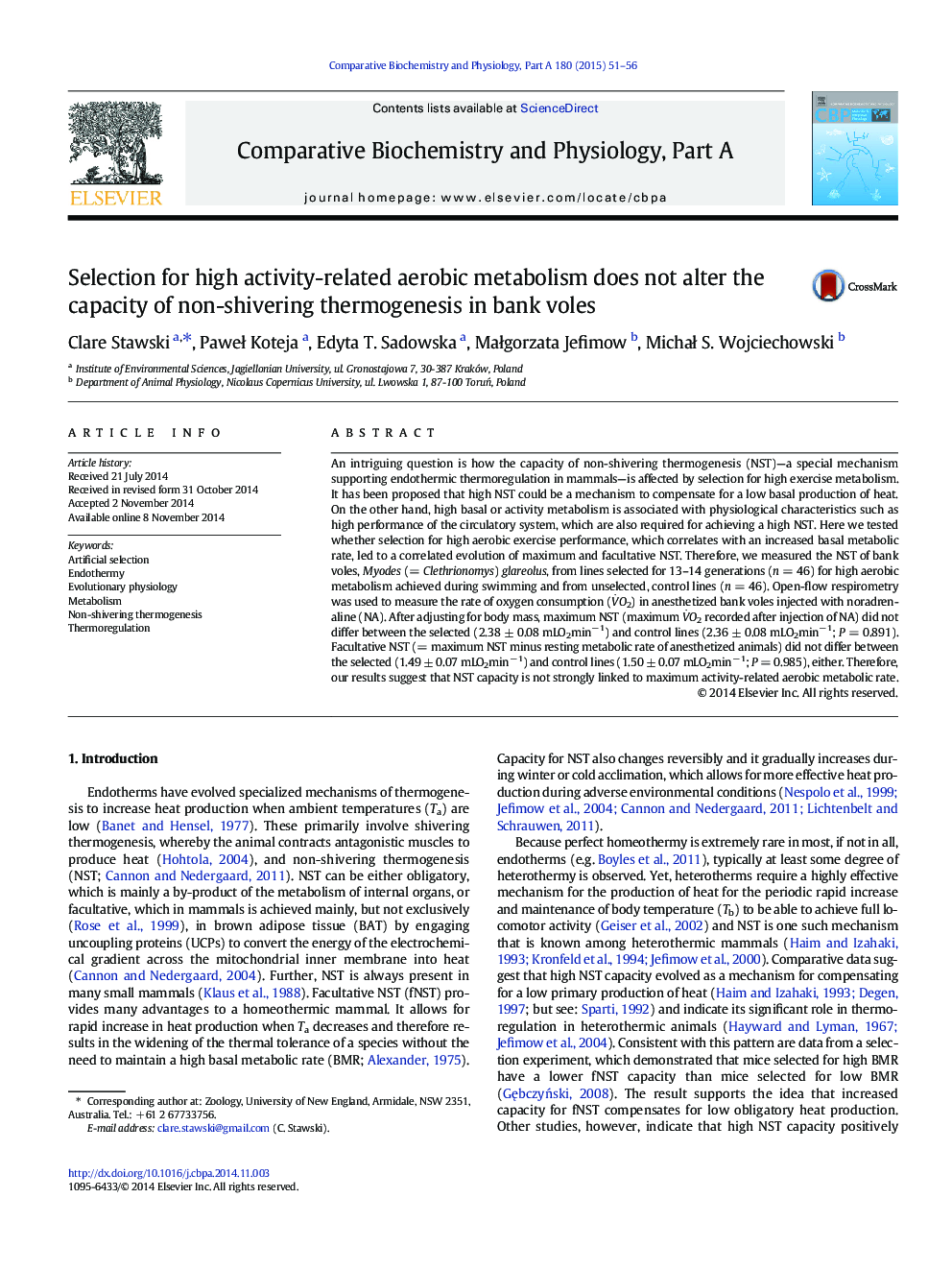| Article ID | Journal | Published Year | Pages | File Type |
|---|---|---|---|---|
| 1972049 | Comparative Biochemistry and Physiology Part A: Molecular & Integrative Physiology | 2015 | 6 Pages |
An intriguing question is how the capacity of non-shivering thermogenesis (NST)—a special mechanism supporting endothermic thermoregulation in mammals—is affected by selection for high exercise metabolism. It has been proposed that high NST could be a mechanism to compensate for a low basal production of heat. On the other hand, high basal or activity metabolism is associated with physiological characteristics such as high performance of the circulatory system, which are also required for achieving a high NST. Here we tested whether selection for high aerobic exercise performance, which correlates with an increased basal metabolic rate, led to a correlated evolution of maximum and facultative NST. Therefore, we measured the NST of bank voles, Myodes (= Clethrionomys) glareolus, from lines selected for 13–14 generations (n = 46) for high aerobic metabolism achieved during swimming and from unselected, control lines (n = 46). Open-flow respirometry was used to measure the rate of oxygen consumption (V·O2) in anesthetized bank voles injected with noradrenaline (NA). After adjusting for body mass, maximum NST (maximum V·O2 recorded after injection of NA) did not differ between the selected (2.38 ± 0.08 mLO2min− 1) and control lines (2.36 ± 0.08 mLO2min− 1; P = 0.891). Facultative NST (= maximum NST minus resting metabolic rate of anesthetized animals) did not differ between the selected (1.49 ± 0.07 mLO2min− 1) and control lines (1.50 ± 0.07 mLO2min− 1; P = 0.985), either. Therefore, our results suggest that NST capacity is not strongly linked to maximum activity-related aerobic metabolic rate.
